Introduction
In the heart of the South Pacific lies one of Fiji’s most captivating destinations—the Mamanuca Islands. Just a short distance from Nadi and Denarau, this cluster of volcanic islands is a haven for travelers who dream of pristine beaches, crystal-clear lagoons, vibrant coral reefs, and year-round sunshine.
The islands have earned global recognition not only for their natural beauty but also for their appearances in films and television. The movie Cast Away starring Tom Hanks was filmed on Monuriki Island, while popular reality shows such as Survivor have also used these breathtaking backdrops.
What makes the Mamanuca Islands in Fiji especially appealing is their versatility. They are equally loved by honeymooners looking for romance, families seeking fun, surfers chasing world-class waves, and backpackers craving adventure. Here, you can spend one day exploring coral reefs teeming with marine life, and the next sipping cocktails on a floating bar in the middle of the ocean.
Geography & Location
The Mamanuca group is located off the west coast of Viti Levu, Fiji’s main island. The archipelago is made up of around 20 islands, some of which disappear under the sea at high tide. Despite their small size, they are among the most visited islands in Fiji due to their accessibility.
From Nadi International Airport, it takes less than an hour to reach Port Denarau, the main departure point for ferries and speedboats to the islands. This convenient location makes the Mamanucas ideal for visitors who want to enjoy island life without spending long hours traveling.
Climate & Best Time to Visit
The islands enjoy a warm tropical climate all year round, with average temperatures ranging between 26°C and 30°C (79°F to 86°F). Like the rest of Fiji, the Mamanucas experience two main seasons:
-
Dry Season (May to October): Characterized by sunny skies, cooler evenings, and lower humidity. These months are the most popular with visitors, especially for activities like snorkeling, diving, and surfing.
-
Wet Season (November to April): Brings higher temperatures and occasional rain showers, but the islands remain lush and vibrant. This season is less crowded, and prices are more budget-friendly.
For the best balance of weather and activities, many travelers choose to visit the Mamanuca Islands in Fiji between June and September, when visibility in the water is excellent and the climate is pleasant for both relaxation and adventure.
History & Cultural Background
The Mamanucas are not only rich in natural beauty but also steeped in history and tradition. For centuries, indigenous Fijian communities thrived here, relying on the sea for fishing and the fertile volcanic soil for farming. Oral legends speak of gods, chiefs, and ancestral spirits who protected the islands and their people.
European explorers arrived in the 18th century, followed later by missionaries and traders. Over time, the islands developed into a thriving hub for tourism, particularly after Fiji gained independence in 1970. Despite modern resorts and international visitors, traditional customs such as the kava ceremony and meke dance remain a vital part of island life.
Getting There & Around
How to Reach the Islands
Traveling to the Mamanuca Islands in Fiji is easy and often considered part of the adventure. Most journeys begin at Nadi International Airport, Fiji’s primary gateway. From there, it’s only a short drive to Port Denarau, the main hub for boat transfers.
-
Ferry Services:
-
Comfortable ferries operate daily, connecting Port Denarau with several islands. They are a popular and affordable option for tourists.
-
Speedboats:
-
A faster alternative, taking around 30–60 minutes depending on the island. These are ideal for travelers who want to maximize their time.
-
Seaplanes & Helicopters:
-
For a touch of luxury, visitors can arrive by air. Not only do these transfers save time, but they also provide unforgettable aerial views of the archipelago.
Transportation Between Islands
Exploring beyond your resort is easy, thanks to a variety of transport options:
-
Inter-Island Ferries:
-
A convenient choice for island-hopping and day trips.
-
Private Charters:
-
Popular with honeymooners or small groups who want flexibility and privacy.
-
Day Cruises:
-
Great for travelers staying on the mainland but wishing to explore the Mamanucas for a single day.
For those who want to experience multiple islands during their stay, passes are available that cover several ferry routes, allowing flexible travel between destinations.
Main Tourist Attractions in the Mamanuca Islands
The Mamanuca Islands in Fiji are bursting with natural and cultural attractions. Each island has its own unique charm, offering something different for every visitor.
-
Monuriki Island
-
Best known as the filming location of Cast Away. This uninhabited island offers hiking trails, secluded beaches, and snorkeling in untouched reefs.
-
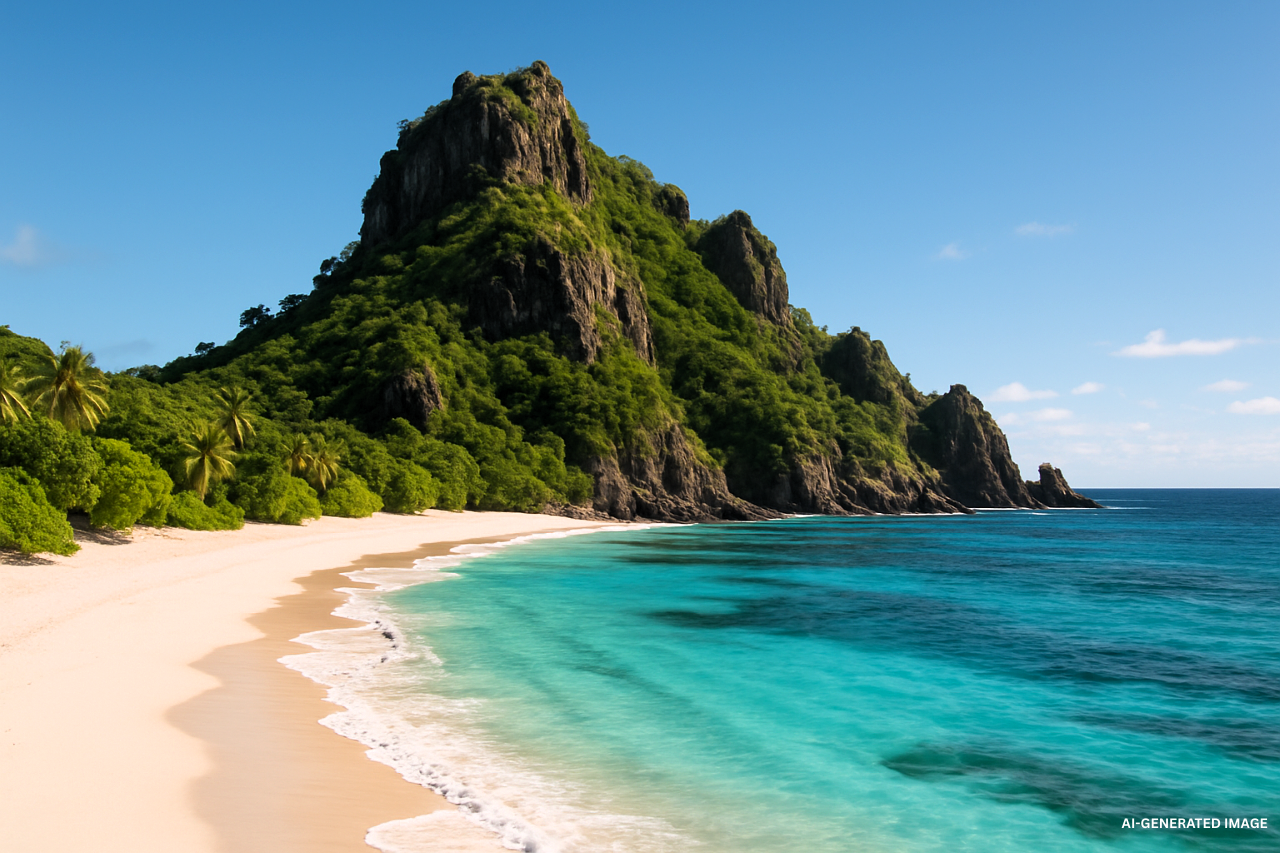
-
Beachcomber Island
-
Famous as Fiji’s “party island,” Beachcomber is popular with backpackers and young travelers thanks to its lively nightlife and social atmosphere.
-
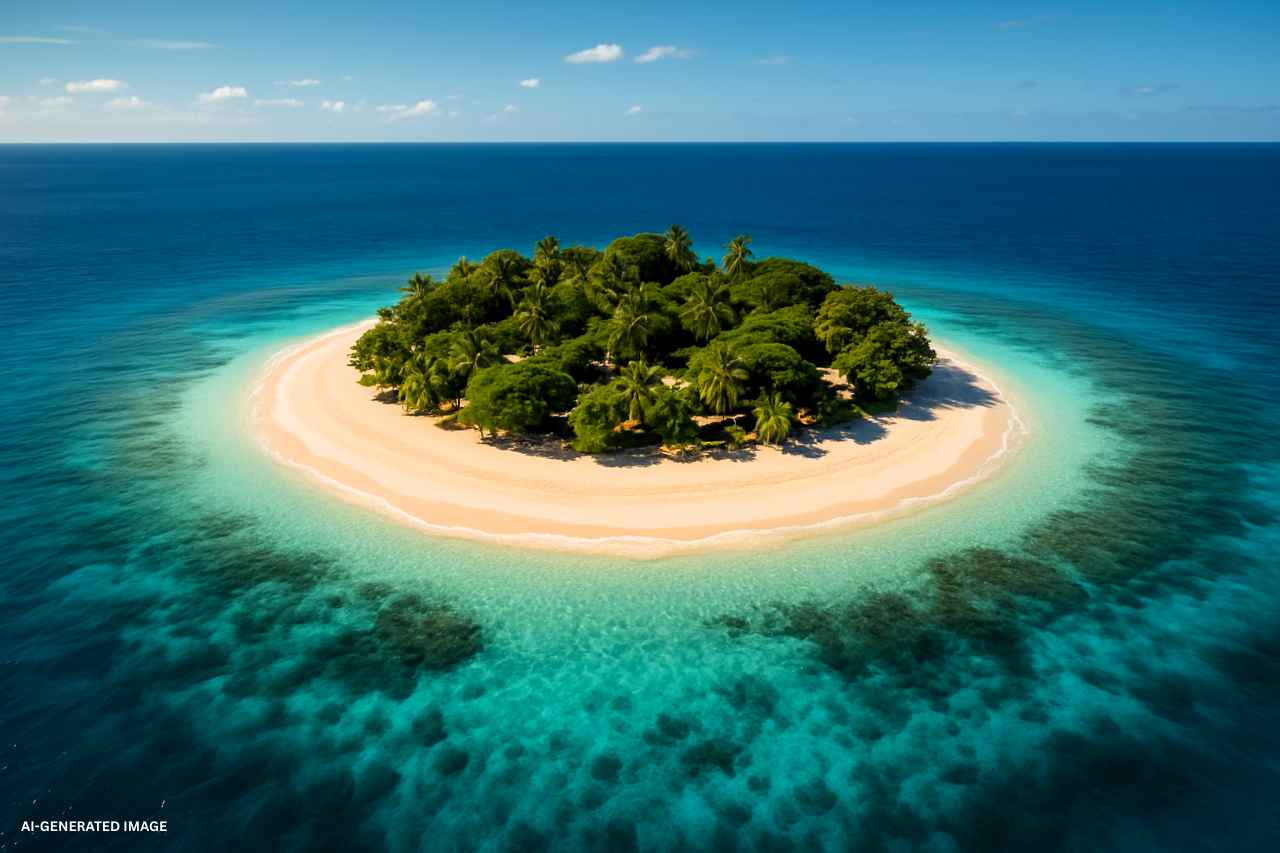
-
Mana Island
-
A versatile destination featuring long white beaches, coral reefs, and mid-range resorts. Perfect for families and divers alike.
-
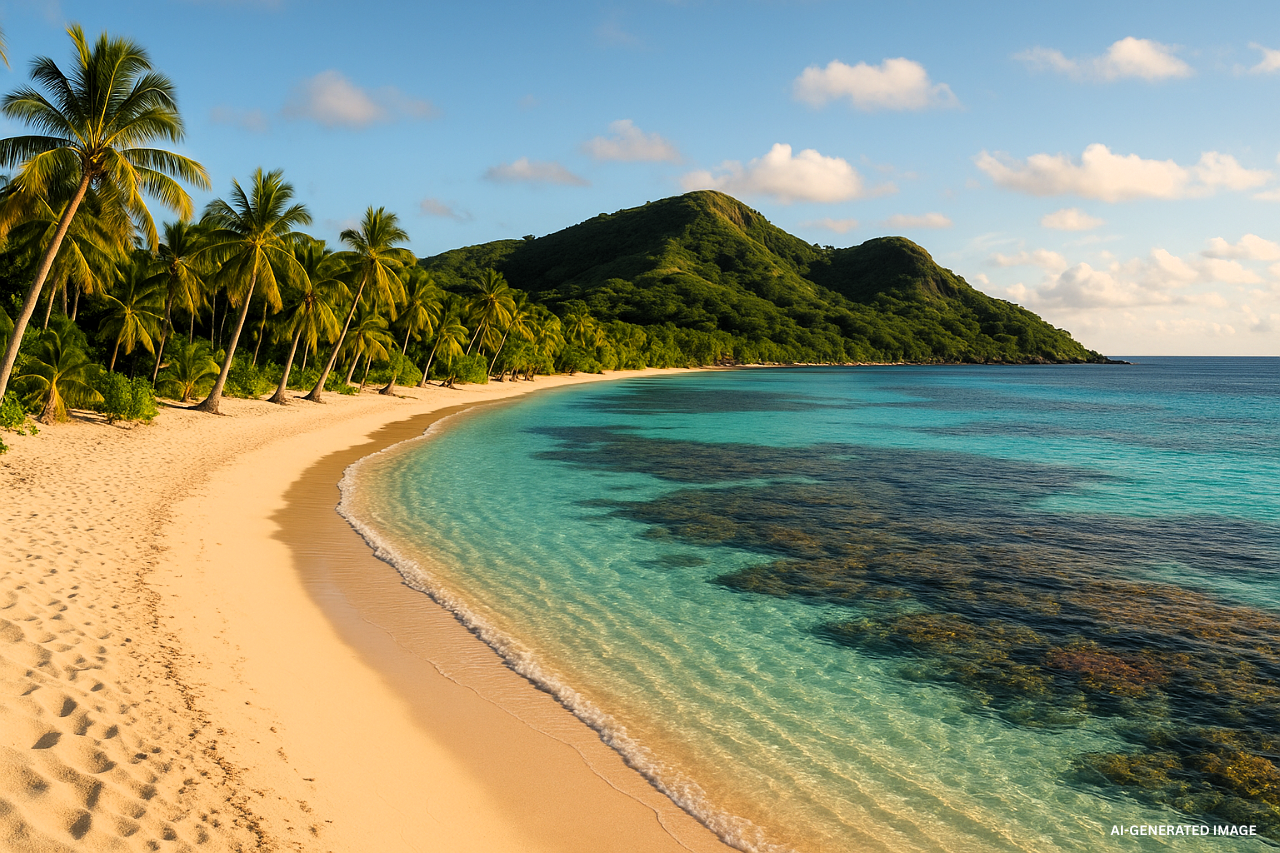
-
Malolo Island
-
The largest island in the Mamanuca group, home to luxury resorts, traditional villages, and the gateway to famous surf breaks like Cloudbreak.
-
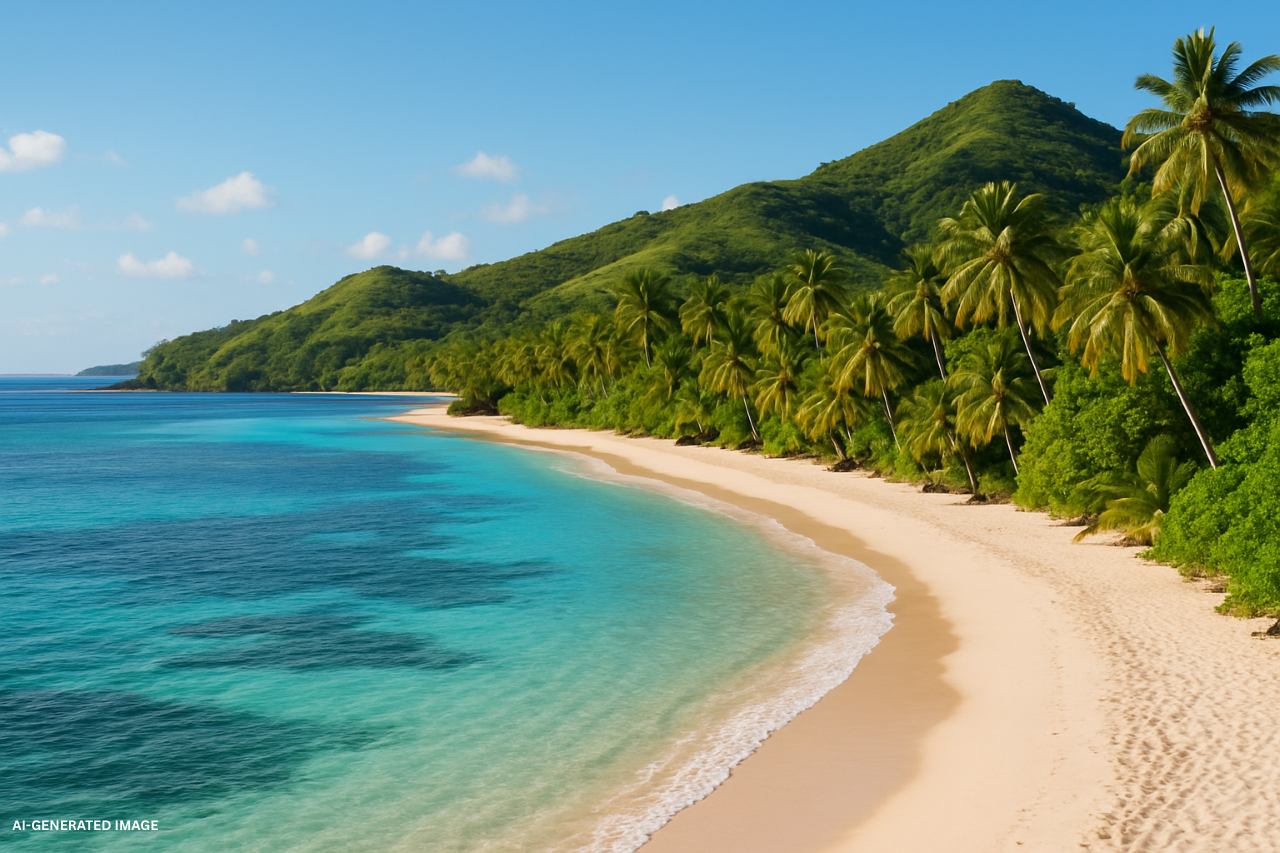
-
Treasure Island
-
A small coral cay offering intimacy and tranquility, often chosen by couples for honeymoons and weddings.
-
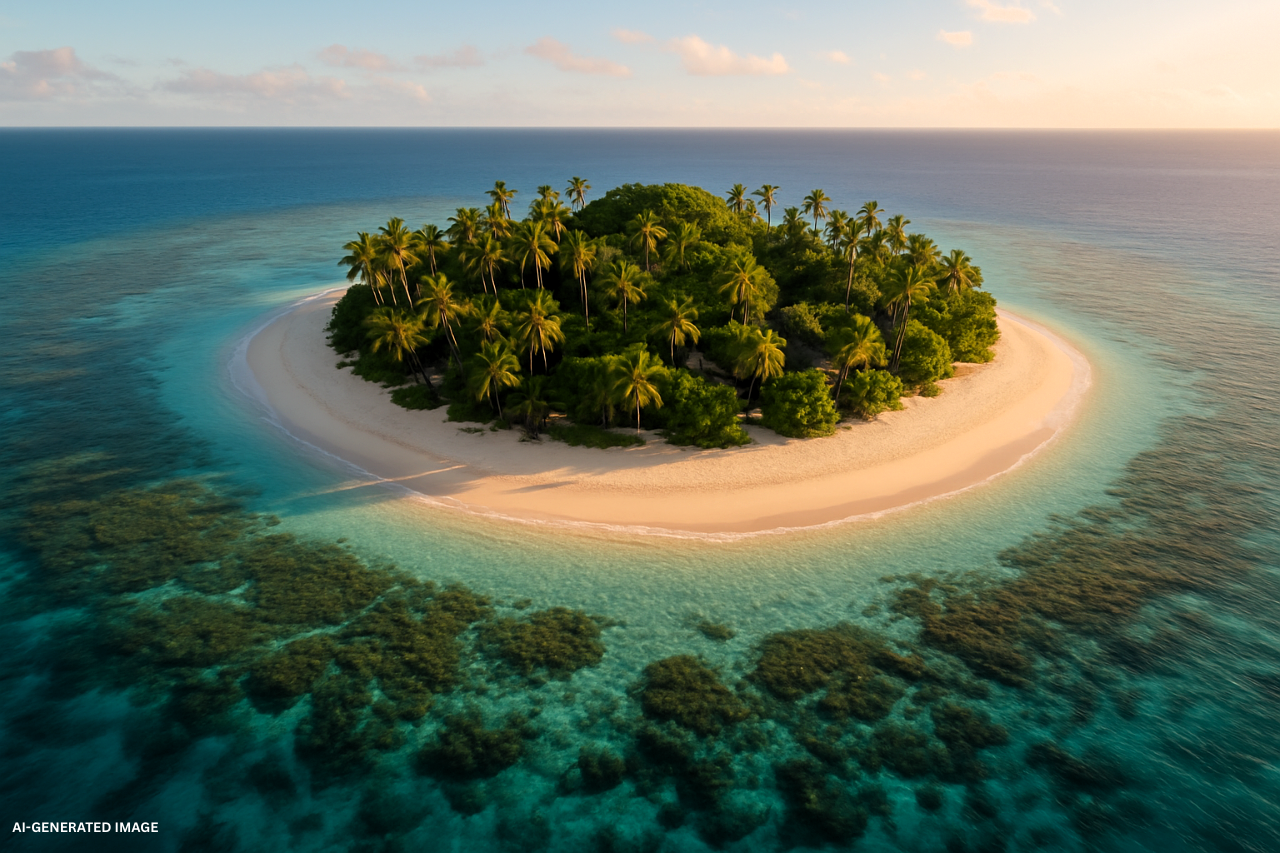
-
Cloud 9
-
A floating bar and restaurant located in the middle of the ocean, serving wood-fired pizza and tropical cocktails with panoramic ocean views.
-
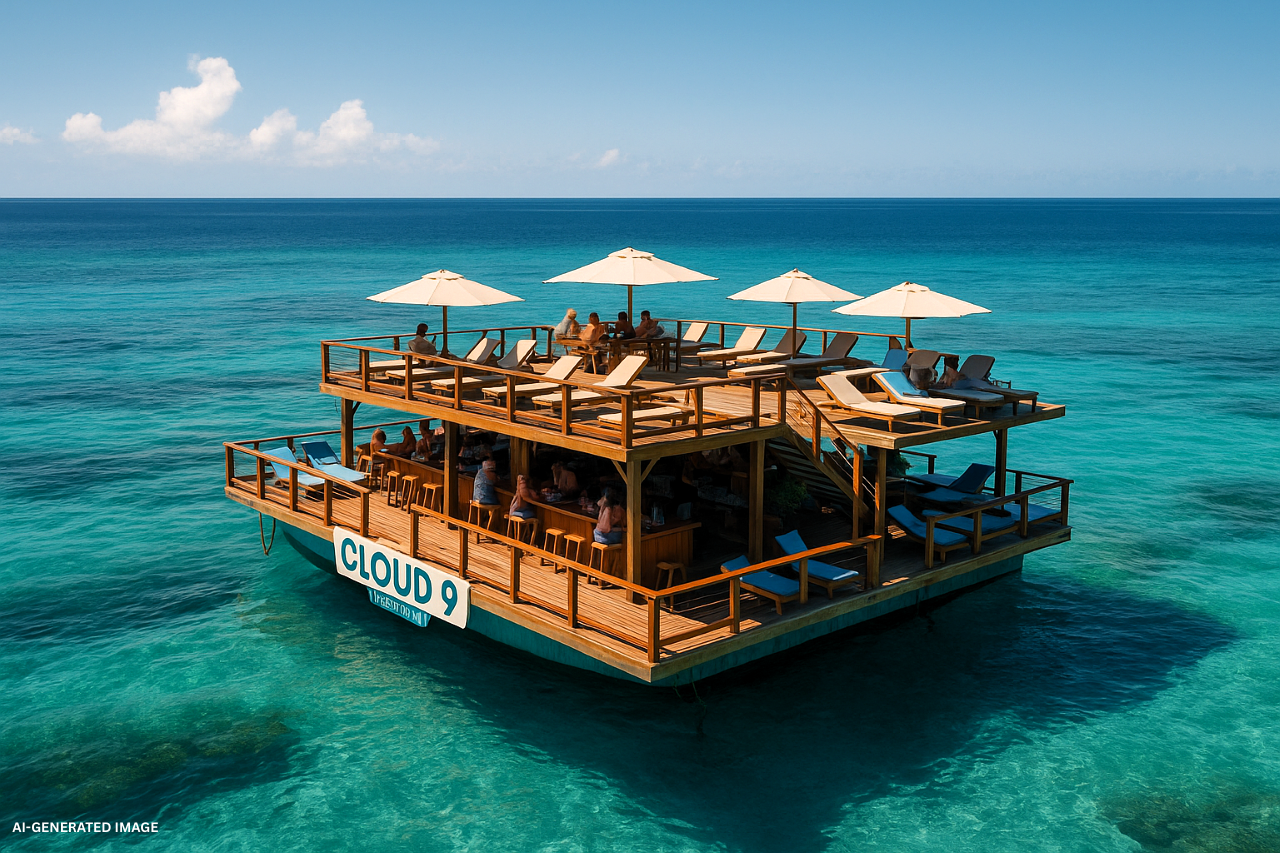
-
Castaway Island (Qalito)
-
Renowned for its picturesque beaches and family-friendly accommodations. A balance of luxury and tradition makes it a popular choice.
-
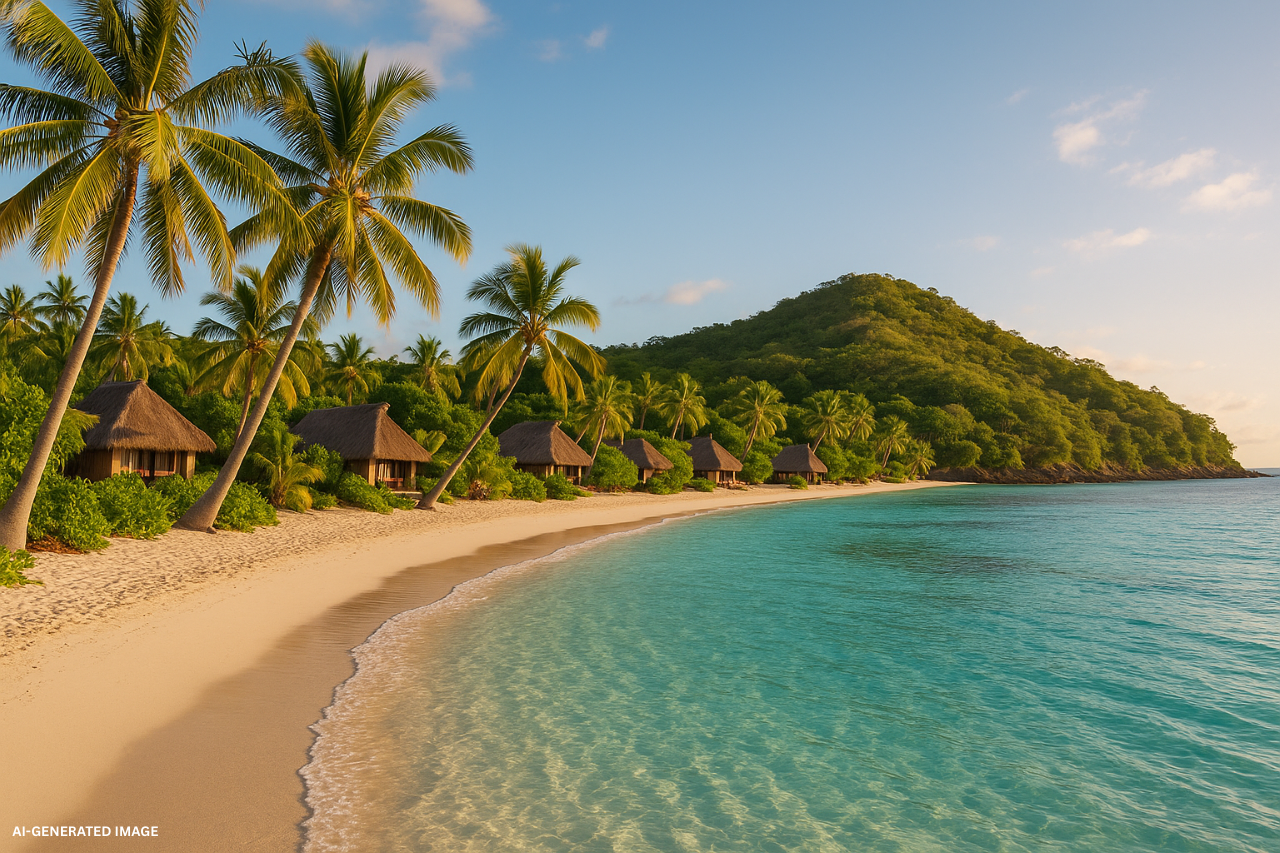
-
South Sea Island
-
One of the smallest islands, yet packed with activities. A favorite for day-trippers thanks to snorkeling, kayaking, and glass-bottom boat tours.
-
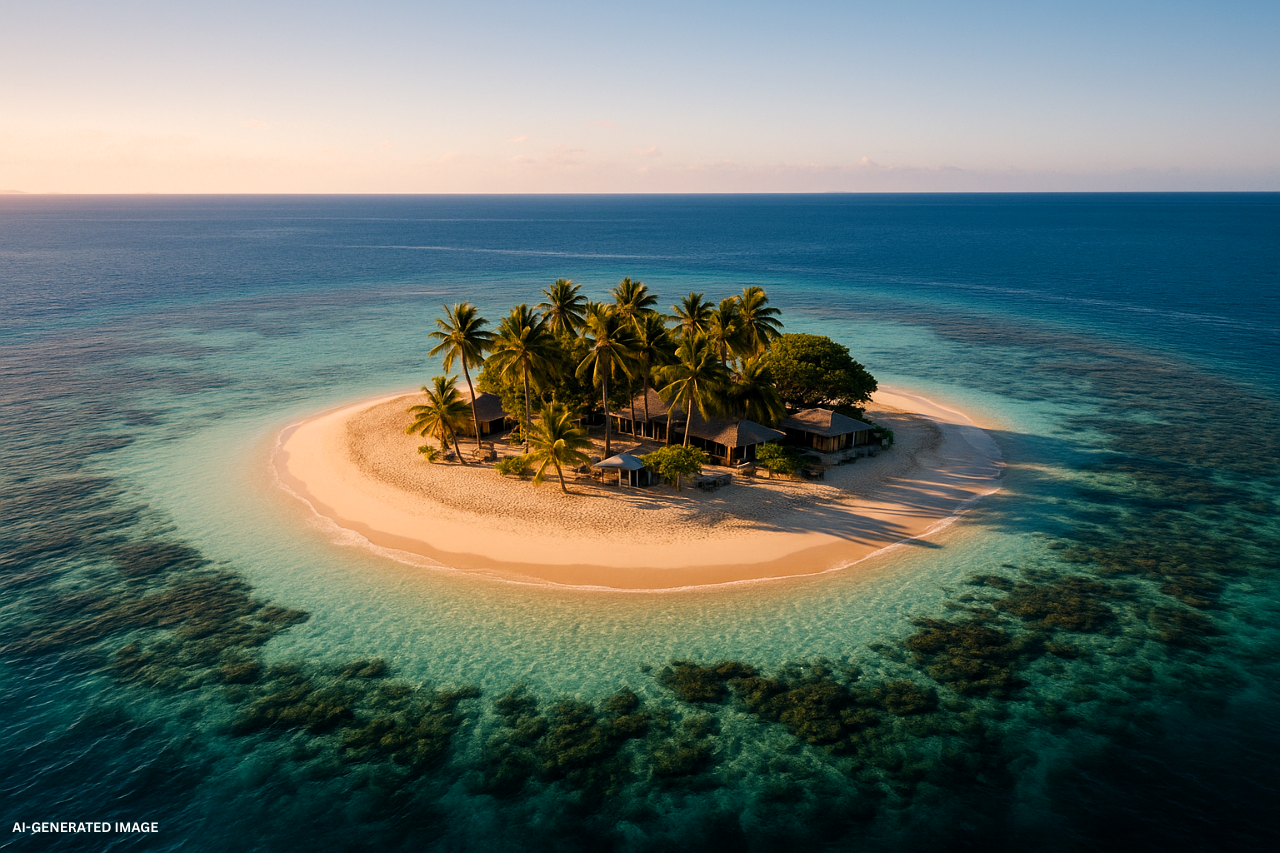
-
Surfing Spots – Cloudbreak & Namotu Left
-
Cloudbreak is considered one of the world’s best surf breaks, attracting professionals from around the globe. Nearby Namotu Left and Wilkes Passage offer additional options for advanced surfers.
-
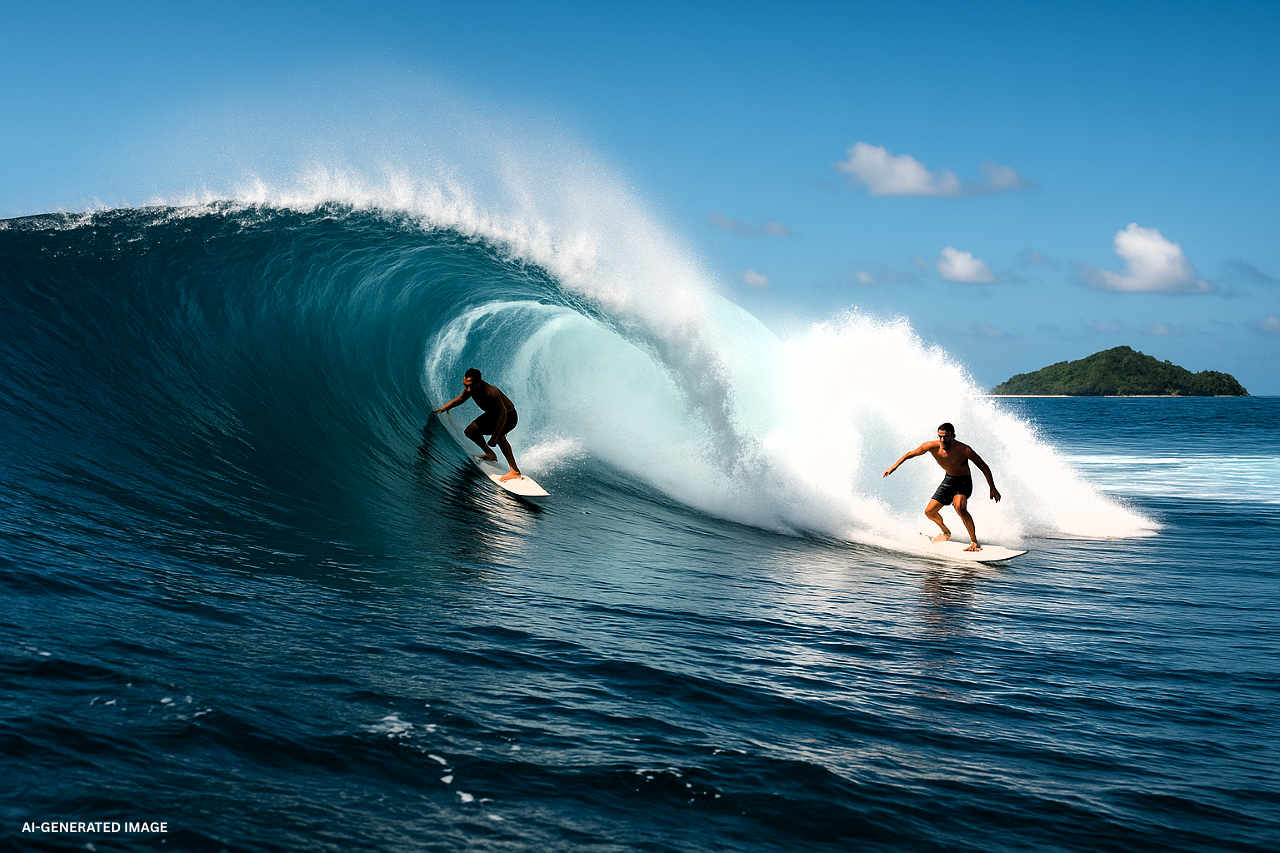
Each of these attractions adds to the diversity of experiences in the Mamanuca Islands in Fiji, making the region much more than just a beach getaway.
Things to Do in the Mamanuca Islands
The Mamanuca Islands in Fiji are more than a place to relax on stunning beaches—they’re a playground for adventure, romance, and cultural exploration. Whether you’re a thrill-seeker, a couple looking for dreamy escapes, or a family planning an activity-packed holiday, the islands have something to keep everyone entertained.
Water Adventures
Snorkeling and Diving
Beneath the surface of the Mamanucas lies a spectacular underwater world. Coral gardens flourish here, home to reef fish in dazzling colors, graceful sea turtles, and the occasional reef shark gliding through clear waters.
-
Top Snorkeling Areas:
-
Malolo Barrier Reef, Treasure Island, and the waters near South Sea Island.
-
Diving Highlights:
-
Sites like “The Supermarket” near Mana Island are famous for shark encounters, while shallow reefs provide beginner-friendly diving spots.
With warm seas throughout the year and exceptional visibility (often reaching 30–40 meters), snorkeling and diving are among the most unforgettable activities in the Mamanuca Islands in Fiji.
Surfing
The islands are a dream destination for surfers. Cloudbreak, off Tavarua Island, ranks among the top surf spots in the world, attracting professional surfers for its towering, perfectly shaped waves.
Other breaks, such as Namotu Left and Wilkes Passage, offer equally exciting challenges. If you’re new to surfing, calmer lagoons around Malolo Island host surf schools that cater to beginners.
Kayaking, Paddleboarding & Sailing
Not all adventures involve big waves. Many resorts offer free use of kayaks and paddleboards, allowing you to explore the surrounding lagoons at your own pace. Sailing trips, including catamaran tours, let visitors experience the islands from a different perspective—gliding over turquoise waters while soaking up the tropical sun.
On-Land Activities
Hiking on Malolo Island
Although the Mamanucas are best known for their beaches and reefs, Malolo Island has scenic trails that lead to lookout points with spectacular ocean panoramas. These hikes are short and manageable, making them great for casual walkers as well as families.
Island-Hopping & Beach Picnics
If you want to experience more than one island, boat tours are the way to go. Day cruises combine snorkeling stops, cultural visits, and relaxing picnics on quiet beaches, giving travelers the chance to sample multiple islands in a single day.
Eco-Tours & Cultural Visits
Guided eco-walks introduce visitors to mangrove forests, native plants, and conservation projects. Village tours, meanwhile, allow guests to experience everyday Fijian life, from traditional cooking to weaving mats and sharing stories with elders.
Romantic Experiences
The Mamanuca Islands in Fiji are tailor-made for romance. Secluded beaches, breathtaking sunsets, and luxurious resorts create the perfect setting for couples.
-
Honeymoon Resorts:
-
Many islands feature adults-only retreats with overwater bungalows, private pools, and spa experiences.
-
Sunset Cruises:
-
Sailing into the horizon with champagne in hand is one of the most romantic experiences couples can enjoy here.
-
Private Dining:
-
Resorts offer candlelit dinners under the stars, complete with ocean views and the sound of gentle waves.
Family-Friendly Fun
Traveling with kids? The Mamanucas are an excellent choice for families thanks to calm waters and activities for all ages.
-
Safe Lagoons:
-
Shallow, sheltered beaches make swimming safe for children.
-
Kids’ Clubs:
-
Resorts like Plantation Island Resort keep children entertained with treasure hunts, craft sessions, and cultural workshops.
-
Performances & Shows:
-
Families can watch fire-dancing spectacles or enjoy traditional meke dance performances that showcase Fijian storytelling.
Parents can relax knowing their children are both entertained and safe in a welcoming environment.
Unforgettable Experiences
-
Cloud 9 Floating Bar:
-
A double-deck floating pizzeria and cocktail bar anchored in the ocean—perfect for an afternoon of music, food, and swimming.
-
Swimming with Reef Sharks:
-
Guided snorkeling trips give adventurous travelers the chance to swim alongside harmless reef sharks.
-
Fishing Excursions:
-
Charter boats take anglers into deeper waters to catch tuna, mahi-mahi, and even marlin.
-
Underwater Photography Tours:
-
Professional guides help capture the magic of the coral reefs on camera, ideal for divers and snorkelers who want lasting memories.
Why the Mamanucas are Perfect for Every Traveler
From thrilling surf breaks to tranquil sunset cruises, the Mamanuca Islands in Fiji provide an incredible mix of experiences. Adventure seekers, couples, and families all find activities that make their holiday memorable. Each day offers something new, ensuring your time in the islands is as exciting as it is relaxing.
Resorts, Stays & Accommodation
A highlight of any trip to the Mamanuca Islands in Fiji is deciding where to stay. Each island usually has just one resort, meaning you’ll often feel like you have an entire island to yourself. Whether you want luxury overwater villas, mid-range comfort, or a backpacker-friendly social scene, the Mamanucas cater to every style and budget.
Luxury Resorts
For travelers seeking indulgence, the Mamanucas offer some of Fiji’s finest luxury properties. These resorts provide not only privacy and comfort but also unforgettable settings surrounded by turquoise waters and pristine beaches.
-
Likuliku Lagoon Resort
-
This adults-only resort is famous for its stunning overwater bures, the first of their kind in Fiji. Each villa features direct lagoon access, traditional Fijian design, and modern luxury touches. Couples often choose Likuliku for honeymoons and anniversaries.
-
Tokoriki Island Resort
-
Known for its intimate atmosphere, Tokoriki offers beachfront villas, infinity pools, and personalized service. With a focus on romance and relaxation, this resort is perfect for couples looking to disconnect from the world.
-
Vomo Island Resort
-
Vomo balances exclusivity with family-friendly amenities. It has luxury beachfront villas, fine dining, and even a dedicated kids’ village, making it one of the most versatile high-end resorts in the Mamanucas.
Luxury resorts in the islands often include spa services, private dining options, and customized excursions, ensuring guests feel pampered from start to finish.
Mid-Range Resorts
Not all stays in the Mamanuca Islands in Fiji have to come with a hefty price tag. Mid-range resorts offer comfort, great facilities, and easy access to island activities without sacrificing quality.
-
Mana Island Resort & Spa
-
With multiple beaches, on-site restaurants, and a wide range of activities, Mana Island Resort appeals to families, couples, and groups alike. Its variety of accommodations—from standard rooms to beachfront villas—makes it a flexible choice.
-
Plantation Island Resort
-
A lively and family-oriented property, Plantation Island Resort is packed with amenities such as pools, water sports, and cultural shows. It’s particularly popular with families thanks to its kids’ programs and safe lagoon beaches.
-
Castaway Island Resort (Qalito Island)
-
Combining rustic charm with modern amenities, Castaway Island is known for its traditional thatched bures set among gardens and beaches. It offers a relaxed, welcoming atmosphere and plenty of activities for all ages.
Mid-range options strike a great balance between affordability and comfort, making them suitable for longer stays or travelers who want both adventure and relaxation.
Budget-Friendly Stays
For backpackers and budget-conscious travelers, the Mamanucas also have affordable options that make island life accessible without luxury prices.
-
Beachcomber Island Resort
-
Often called the “party island,” Beachcomber is popular among young travelers. It offers dormitory-style rooms and budget bures, along with a lively nightlife scene featuring bonfires, music, and beach parties.
-
South Sea Island Lodge
-
This tiny island provides budget-friendly accommodations combined with activities like snorkeling, kayaking, and cultural demonstrations. Its small size makes it easy to explore in just one day, and many travelers visit on short getaways.
Budget stays may be simpler, but they offer the same access to beaches, reefs, and sunsets that make the Mamanucas famous.
Unique Accommodation Experiences
Staying in the Mamanuca Islands in Fiji isn’t just about finding a room—it’s about enjoying experiences that can’t be replicated elsewhere.
-
Overwater Villas:
-
Resorts like Likuliku allow you to step directly from your villa deck into the ocean.
-
Private Island Rentals:
-
Some luxury resorts let you book an entire island for yourself, perfect for weddings, retreats, or ultimate privacy.
-
Eco-Lodges:
-
A few resorts emphasize sustainability with solar energy, natural building materials, and reef conservation programs, giving eco-conscious travelers peace of mind.
Choosing the Right Stay
When selecting where to stay, consider:
-
Budget:
-
Are you looking for five-star indulgence or a budget-friendly escape?
-
Purpose:
-
Honeymoon, family holiday, or solo adventure?
-
Proximity:
-
Some islands are closer to Denarau and easier to reach, while others feel more remote.
-
Activities:
-
Certain resorts specialize in diving, surfing, or cultural immersion.
No matter which resort you choose, the Mamanucas offer a sense of exclusivity and charm that makes every stay unforgettable.
Food & Nightlife
A trip to the Mamanuca Islands in Fiji isn’t just about beaches and resorts—it’s also a feast for the senses. Local cuisine, international dining options, and lively island evenings make food and nightlife an essential part of the experience. From traditional dishes prepared with age-old methods to parties under the stars, the Mamanucas serve up flavors and entertainment that complement their natural beauty.
The Flavors of Fijian Cuisine
Fijian food is a delicious reflection of the islands’ culture, combining indigenous cooking traditions with influences from Indian and Pacific communities.
-
Kokoda
-
A Fijian specialty similar to ceviche. Fresh fish is marinated in lime juice, then mixed with coconut cream, chilies, onions, and vegetables. It’s light, refreshing, and perfectly suited to the tropical climate.
-
Lovo Feast
-
Lovo is a traditional method of cooking where food is wrapped in banana leaves and slow-cooked underground with hot stones. Meats, seafood, and root vegetables come out tender and smoky, often served during cultural nights at resorts.
-
Fijian-Indian Curries
-
Thanks to Fiji’s Indo-Fijian community, curry dishes are common and often feature seafood, chicken, or vegetables, served with roti and chutneys.
-
Seafood
- With the Pacific Ocean right at the doorstep, seafood is always fresh. Lobster, tuna, mahi-mahi, and prawns feature heavily on resort menus, often grilled or prepared with coconut-based sauces.
Dining Experiences in the Mamanucas
Food in the Mamanuca Islands in Fiji goes beyond taste—it’s also about the setting and the experience.
-
Resort Restaurants
-
High-end resorts offer fine dining with multi-course menus and wine pairings, while mid-range properties provide buffet spreads with both international and Fijian dishes. Many chefs use locally sourced ingredients, keeping meals fresh and sustainable.
-
Beach Cafés & Casual Spots
-
If you prefer a relaxed vibe, some islands have cafés or outdoor eateries serving wood-fired pizza, burgers, and simple local meals right on the sand.
-
Cloud 9 Floating Bar
-
Perhaps the most unique dining spot in the region, Cloud 9 is a floating bar and restaurant anchored in the middle of the sea. It’s famous for its wood-fired pizzas, cocktails, and stunning views of turquoise waters.
-
Private Beach Dining
-
For a truly memorable evening, many resorts organize private candlelit dinners on the beach. Imagine dining under the stars, surrounded by tiki torches and the sound of waves—it’s a popular choice for honeymooners.
Nightlife on the Islands
While the islands are not buzzing with city-style nightclubs, evenings in the Mamanucas are still full of charm and energy.
-
Cultural Performances
-
Resorts often host meke dances—traditional performances featuring music, chanting, and storytelling. Fire-dancing shows are also common, with skilled performers twirling flames against the night sky.
-
Beachcomber Island Parties
-
Known as Fiji’s “party island,” Beachcomber is the liveliest nightlife spot in the Mamanucas. With bonfires, DJs, and live music, it’s popular among backpackers and young travelers looking for a social atmosphere.
-
Resort Lounges & Bars
-
Many luxury resorts offer more low-key nights with cocktail lounges, live acoustic music, and beachfront bars—perfect for couples or those who prefer a relaxed evening.
-
Starlit Cruises
-
Night cruises under the stars are available for travelers who want something romantic and different. These often include dinner, live music, and stargazing away from artificial lights.
Drinks to Try
-
Kava
-
This traditional drink, made from the root of the yaqona plant, plays a central role in Fijian ceremonies. It has a slightly earthy taste and a mild calming effect. Guests are often invited to join a kava ceremony during their stay.
-
Fijian Rum & Cocktails
-
Fiji produces excellent rums, and they feature in many tropical cocktails, often mixed with pineapple, coconut, or passionfruit juice.
-
Mocktails & Fresh Juices
- Non-alcoholic options are equally refreshing, with mocktails made from local fruits like guava, mango, and papaya.
The Island Evening Experience
Dining and nightlife in the Mamanuca Islands in Fiji are less about extravagance and more about atmosphere. Whether you’re enjoying a seafood platter on the beach, watching fire dancers perform, or sharing kava with locals, evenings here are just as magical as the days. Every night feels different, offering a chance to connect with both the culture and the rhythm of island life.
Culture & Traditions
Beyond turquoise lagoons and white sandy beaches, the Mamanuca Islands in Fiji are deeply rooted in a cultural heritage that has been passed down through generations. Experiencing this side of the islands gives visitors a richer understanding of Fijian life and values, revealing that the true beauty of the Mamanucas lies not only in their scenery but also in their people.
The Fijian Way of Life
The spirit of the islands is best captured in the word “Bula”, a greeting that means more than just hello—it represents life, happiness, and goodwill. This “Bula spirit” is at the heart of Fijian culture, where hospitality and community are prioritized above all else.
Daily life in the Mamanucas is simple yet meaningful. Villages are built around strong family ties, where cooperation and respect for elders remain central. Even those who work at luxury resorts often return to their villages, balancing modern tourism with traditional living. Visitors quickly notice this warmth, as locals welcome them not as strangers, but as friends.
Traditional Ceremonies
Participating in local ceremonies is one of the most rewarding cultural experiences in the islands.
-
Kava Ceremony
-
A cultural ritual in which guests sit together while kava, a drink made from the yaqona root, is prepared in a wooden bowl and shared in coconut shells. The ceremony is accompanied by chants, clapping, and expressions of respect. More than just a drink, kava is a symbol of unity and community.
-
Meke Dance
-
Storytelling through dance, the meke combines rhythmic movements, chanting, and drumming. Performers wear traditional costumes made from tapa cloth, grass skirts, and flowers, creating a colorful and dramatic showcase. These performances often narrate myths, victories, or village life.
Guests staying at resorts in the Mamanuca Islands in Fiji are often invited to attend such events, which blend entertainment with cultural education.
Village Life
For a more authentic experience, many visitors take guided trips to nearby villages, especially on islands like Malolo. These excursions provide a glimpse into everyday Fijian traditions.
-
Welcoming Rituals:
-
Guests are usually greeted with a sevusevu ceremony, where offering kava root shows respect to the village chief.
-
Daily Activities:
-
Tourists can observe or even take part in weaving mats, preparing lovo meals, or fishing alongside locals.
-
Handicrafts:
-
Villages often sell handmade souvenirs such as wooden carvings, woven baskets, and jewelry crafted from shells. Purchasing these not only provides a keepsake but also supports local artisans.
Such visits highlight the strong sense of community and the slower pace of life that defines the islands.
Core Cultural Values
Fijian culture is shaped by a few key principles:
-
Respect for Elders:
-
Wisdom and leadership come from older generations, who are highly regarded in village life.
-
Community Over Individualism:
-
Success is measured not in personal wealth, but in the well-being of the group.
-
Harmony with Nature:
-
The ocean, land, and natural resources are seen as gifts to be cared for, not exploited.
These values influence daily living, as well as how visitors are welcomed into communities.
A Blend of Influences
While indigenous traditions dominate, the islands also reflect Fiji’s multicultural identity. The presence of Indo-Fijians has introduced Indian cuisine, festivals, and crafts, creating a unique blend of cultures. This mixture adds to the islands’ charm, where one evening might be spent enjoying a traditional lovo feast and another savoring a spicy curry.
Why Culture Matters
Tourism has helped the Mamanucas thrive economically, but it also comes with the challenge of protecting local traditions. Many resorts now collaborate with villages to ensure cultural programs benefit both visitors and communities. When travelers join ceremonies, buy local crafts, or simply greet people with “Bula,” they contribute to preserving the identity of the islands.
The Mamanuca Islands in Fiji may be famous for their beaches and luxury, but their cultural heartbeat is what leaves the deepest impression. For many visitors, it’s the warmth of the people and the richness of traditions that truly define the journey.
Practical Travel Tips
A holiday in the Mamanuca Islands in Fiji becomes much more enjoyable when you’re well-prepared. From entry requirements to packing advice, these practical tips will help you plan a smooth trip and avoid unnecessary surprises.
Visa & Entry Requirements
Entering Fiji is generally straightforward, especially for visitors from countries with visa-free agreements.
-
Visa-Free Travel
-
Nationals from over 100 countries, including the USA, Canada, Australia, New Zealand, the UK, and most EU states, can stay in Fiji for up to four months without a visa.
-
Documents You’ll Need
-
A passport valid for at least six months beyond your stay
-
Proof of onward or return travel
-
Evidence of sufficient funds for your trip
-
-
Staying Longer
-
Those wishing to extend their time in Fiji can apply for a visa extension once in the country. Longer-term stays for work or volunteering require special permits.
Money & Budgeting
Local Currency
The official currency is the Fijian Dollar (FJD). Major resorts accept credit cards, but it’s smart to carry some cash, especially for shopping at markets or paying for boat transfers.
Cost Guide
-
Luxury Resorts:
-
From USD 500+ per night
-
Mid-Range Resorts:
-
Around USD 200–400 per night
-
Budget Stays:
-
Between USD 50–100 per night (dorms and basic bures may cost less)
-
Meals:
-
Resort dining: USD 30–70 per person
-
Local eateries or casual cafés: USD 10–20 per meal
-
-
Activities:
-
Snorkeling tours: USD 50–100
-
Full-day island cruises: USD 100–150
-
Surf lessons: USD 50–80
-
This range shows that the Mamanuca Islands in Fiji can be enjoyed both by those seeking luxury and those traveling on tighter budgets.
Health & Safety
The islands are generally safe and welcoming, but being cautious ensures peace of mind.
-
Vaccinations:
-
No mandatory vaccines, though routine shots (like tetanus and hepatitis A) are advisable.
-
Travel Insurance:
-
Essential if you plan activities such as diving or surfing, as it covers medical emergencies and unexpected delays.
-
Swimming Safety:
-
Stick to resort beaches or designated swimming areas; reefs and strong currents can be dangerous.
-
Marine Awareness:
-
Never touch corals or disturb wildlife while snorkeling or diving. Use reef-safe sunscreen to protect marine ecosystems.
-
Medical Services:
-
Larger resorts often have medical staff, while hospitals are located in Nadi on the mainland.
Packing Essentials
Packing smart ensures you’ll be comfortable and prepared for island life.
-
Clothing:
-
Lightweight, breathable clothes
-
Swimsuits and cover-ups
-
A light jacket or shawl for cooler nights
-
-
Footwear:
-
Flip-flops for the beach
-
Comfortable walking shoes for hikes
-
-
Sun Protection:
-
Reef-safe sunscreen
-
Sunglasses with UV protection
-
A wide-brimmed hat
-
-
Gear:
-
Snorkeling gear (optional—resorts usually provide it)
-
Waterproof bags for electronics
-
A GoPro or underwater camera
-
-
Health & Comfort:
-
Insect repellent
-
A basic first-aid kit
-
Seasickness tablets if you’ll be boating often
-
-
Other Essentials:
-
Universal power adapter
-
Reusable water bottle
-
Daypack for short excursions
-
Connectivity & Communication
-
Wi-Fi:
-
Most resorts provide internet access, but speeds vary, especially on smaller islands.
-
SIM Cards:
-
Local SIM cards (Vodafone Fiji or Digicel) can be bought at Nadi Airport for affordable data and better coverage.
-
Language:
-
English is widely spoken, but learning basic Fijian greetings like Bula (hello) and Vinaka (thank you) is always appreciated.
Tips for Hassle-Free Travel
-
Book Transfers Early:
-
Seaplanes and ferries can sell out in peak season.
-
Respect Village Customs:
-
When visiting local villages, wear modest clothing that covers shoulders and knees.
-
Plan for Cash Needs:
-
ATMs are available in Nadi and Denarau, but rarely on smaller islands.
-
Be Eco-Friendly:
-
Carry reusable items such as bottles and bags to reduce waste. Participate in resort-led reef or beach clean-ups if possible.
Why These Tips Matter
A little preparation goes a long way in ensuring your trip to the Mamanuca Islands in Fiji is relaxed, safe, and memorable. With the right mindset, you can enjoy paradise while also respecting the local culture and environment.
Sustainable & Responsible Tourism
The Mamanuca Islands in Fiji are known worldwide for their natural beauty—crystal waters, coral reefs, and powdery beaches. However, the growth of tourism has also brought the responsibility of protecting these fragile ecosystems. Fortunately, many resorts, local communities, and travelers are working together to ensure the islands remain just as stunning for future generations.
Eco-Friendly Resorts
Several resorts in the Mamanucas have adopted environmentally conscious practices to reduce their impact while still offering luxury experiences.
-
Renewable Energy:
-
Many properties use solar panels and other green energy solutions to power their facilities.
-
Sustainable Design:
-
Buildings often incorporate natural materials like timber and thatch to blend into the landscape.
-
Plastic-Free Policies:
-
Some resorts have eliminated single-use plastics, offering refillable water stations and reusable items instead.
By choosing eco-conscious accommodation, visitors directly support the islands’ efforts to preserve their environment.
Coral Reef Protection
The reefs surrounding the Mamanuca Islands in Fiji are not only breathtaking but also essential to marine biodiversity. Unfortunately, they are sensitive to climate change, pollution, and human activity.
-
Marine Protected Zones:
-
Specific areas are designated as reserves where fishing and reef damage are prohibited.
-
Restoration Projects:
-
Several resorts and conservation groups are replanting coral fragments to revive damaged areas.
-
Visitor Awareness:
-
Tourists are encouraged to avoid touching coral, use reef-safe sunscreen, and follow eco-guidelines while snorkeling or diving.
These collective efforts ensure that future visitors will still be able to enjoy vibrant underwater ecosystems.
Supporting Local Communities
Responsible tourism is not just about protecting nature—it also means empowering the people who live in the islands.
-
Employment:
-
Resorts provide jobs for locals, from chefs to dive instructors, helping communities thrive.
-
Cultural Tourism:
-
Participating in kava ceremonies, meke dances, and village tours helps preserve traditions while providing income to villages.
-
Handmade Crafts:
-
Buying woven mats, jewelry, and carvings directly from artisans ensures money stays within the community.
When travelers support local initiatives, they help sustain both the economy and cultural identity of the islands.
Reducing Your Travel Footprint
Small actions by visitors can make a big difference in protecting the Mamanuca Islands in Fiji:
-
Carry a reusable water bottle instead of buying plastic bottles.
-
Avoid plastic straws and bags; bring your eco-friendly alternatives.
-
Conserve water and electricity in resorts by reusing towels and switching off lights and air-conditioning when not needed.
-
Respect wildlife by observing rather than disturbing.
-
Join community or resort-led beach clean-up programs.
Such mindful practices not only protect the islands but also set a positive example for other travelers.
Eco-Friendly Adventure Options
Travelers can enjoy the islands without harming the environment by choosing low-impact activities:
-
Kayaking and Paddleboarding:
-
Non-motorized water sports that don’t disturb marine life.
-
Guided Eco-Snorkeling:
-
Tours that combine reef exploration with conservation education.
-
Nature Walks:
-
Exploring trails and birdwatching instead of high-impact activities.
These experiences allow visitors to connect with the environment while helping protect it.
Why Responsible Tourism is Vital
The Mamanucas are more than just holiday islands—they are home to unique wildlife and resilient communities. Tourism fuels the local economy, but unchecked growth could harm the very landscapes that attract travelers. By embracing responsible tourism, visitors contribute to a balance where nature, culture, and travel coexist harmoniously.
The future of the Mamanuca Islands in Fiji depends on thoughtful actions today. Sustainable travel ensures that generations to come will enjoy the same turquoise waters, coral reefs, and cultural traditions that enchant visitors today.
Conclusion
The Mamanuca Islands in Fiji are a rare combination of natural wonder, adventure, and cultural richness. With their white sandy beaches, warm turquoise waters, and vibrant reefs, they embody everything travelers expect from a tropical paradise. But these islands are much more than just beautiful scenery—they are living communities where traditions are cherished, and sustainability efforts ensure the environment remains protected.
Whether you’re drawn by the thrill of surfing world-famous breaks like Cloudbreak, the tranquility of snorkeling in crystal-clear lagoons, or the romance of private overwater villas, the Mamanucas have experiences that speak to every kind of traveler. Families will love the safe beaches and cultural shows, couples can escape into luxury and seclusion, and adventurers will find no shortage of water sports and eco-excursions.
Yet, perhaps the most lasting memory visitors take home is the warmth of the Fijian people and the spirit of Bula. It’s this sense of welcome and joy that makes the Mamanuca Islands feel like more than a destination—they feel like home.
By traveling responsibly and respecting both the environment and the culture, visitors can help ensure that this piece of paradise continues to thrive. The Mamanucas aren’t just a holiday spot—they’re a journey that leaves a lifelong impression.
FAQs
How many islands are in the Mamanuca group?
There are about 20 islands in the Mamanuca chain, though some are submerged during high tide. Several are uninhabited, while others feature luxury resorts or host day-trip activities.
When is the best time to visit the Mamanuca Islands?
The most popular months are during the dry season (May to October), when the weather is cooler and ideal for snorkeling, diving, and outdoor adventures. The wet season (November to April) is warmer and more humid but quieter and often cheaper.
Which island is most suitable for families?
Plantation Island Resort and Treasure Island are favorites for families. They offer calm lagoons, kids’ clubs, and safe activities designed for younger visitors.
Are the Mamanuca Islands good for surfing?
Yes, they are world-famous for surf breaks. Cloudbreak is considered one of the best waves in the world, while Wilkes Passage and Namotu Left are also popular. Beginners can find surf schools on Malolo Island.
Can tourists visit Monuriki Island from Cast Away?
Yes. Day trips to Monuriki Island are available. Visitors can hike, snorkel, and explore, but overnight stays are not permitted since it remains uninhabited.
Is there accommodation for budget travelers?
Definitely. While many resorts are high-end, budget-friendly options like Beachcomber Island Resort and hostels on South Sea Island cater to backpackers and travelers on a budget.
How do you get from Nadi to the Mamanuca Islands?
Most visitors travel from Port Denarau, near Nadi, by ferry or speedboat. Seaplane and helicopter transfers are also available for faster and more scenic arrivals.
What activities are recommended for honeymooners?
Honeymooners often choose overwater bungalows, private beach dinners, sunset cruises, and spa treatments. Resorts such as Likuliku Lagoon and Tokoriki Island are especially popular.
Can you do a day trip from the mainland to the Mamanucas?
Yes, day trips are common. Islands like South Sea Island, Beachcomber, and Mana offer day passes that include meals, snorkeling, and water sports.
Are the Mamanuca Islands safe for solo travelers?
Yes. The islands are very safe, and locals are friendly and welcoming. Solo travelers often find it easy to socialize, especially on islands with a backpacker vibe like Beachcomber.
